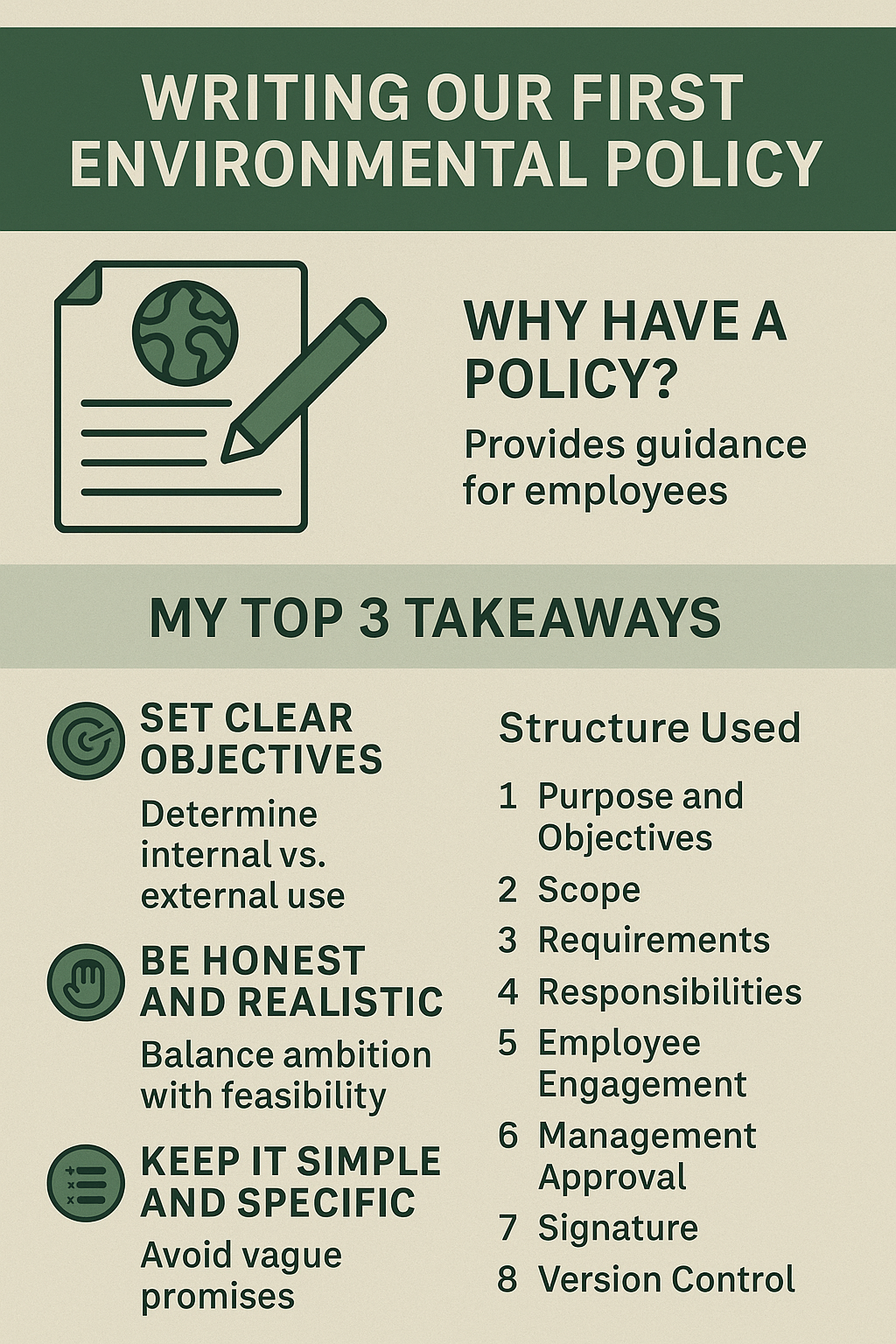Over the past few months, I spent significant time to writing our organization’s first Environmental Policy. It might sound surprising—especially for a company that advises others on GHG emissions and reduction —but until now, we didn’t have one ourselves. That needed to change.
Why companies should have an Environmental Policy?
During interviews with stakeholders, I realized something important: an Environmental Policy isn’t just a symbolic gesture. It serves as practical guidance for employees. How to plan my business travel? Is it okay to take the train for longer journeys? What to we prefer as an organization in terms of environmental topics such as biodiversity, GHG emissions, meetings, travel, commuting and so on. A clear policy helps answer these everyday questions.
What I found (and didn’t find) in existing policies
Like most people starting this kind of task, I began by researching existing policies to get a sense of structure and tone. To be honest, I was a little underwhelmed. Many examples, even from respected consultancies, were short two-pagers filled with broad, generic statements—and lacking in substance. That said, I also found strong examples. The contrast helped clarify my own vision: I wanted our policy to be concrete and transparent.
My top 3 takeaways for writing an Environmental Policy
1) Set clear objectives
Decide upfront if your policy will stay internal or be shared with external stakeholders—customers, investors, or partners. That decision shapes the tone, level of detail, and how much internal data (e.g., travel budgets) you’re comfortable disclosing.
2) Be honest and realistic
A policy should strike a balance between ambition and feasibility. It should push for better practices while remaining achievable. For instance, encouraging public transport is great—but only if there’s actually infrastructure to support it. Your policy should reflect your specific context and agreed goals.
3) Keep it simple and specific
Be clear about your targets and what your organization is really doing and not just supports. It is important to be specific. Instead of saying: “We aim to minimize our environmental impact”
say: “We will reduce our packaging use by 40% through packaging optimization until 2028“
. It is massively important to be specific. Otherwise your stakeholder will simply identify your policy as another marketing document. And this should not be the case. It should be a commitment, an action plan, guidance for your company as well as a statement to your stakeholders. It’s the chance to express what you as an organization think is important in regards of environment and sustainability.
The structure I’ve used
Here’s the structure I’ve created when drafting our Environmental Policy:
1. Purpose and objective
2. Scope
3. Requirements (Business Travel, Energy Management, Waste and water treatment, Biodiversity and ecosystems, GHG emissions and pollution, Beyond Value Chain Mitigation)
4. Responsibilities
5. Employee engagement
6. Management approval (review mechanism, communication)
7. Signature
8. Version Control (tracking of changes, review and updates)
The policy has passed all internal review stages and will soon be published on our website. I am curious what the feedback from our stakeholders will be. I know this document will evolve over time—but I’m proud that we’ve taken this step and added a meaningful piece to our sustainability journey.
UPDATE: Link to the online version -> Our environmental policy | ClimatePartner

